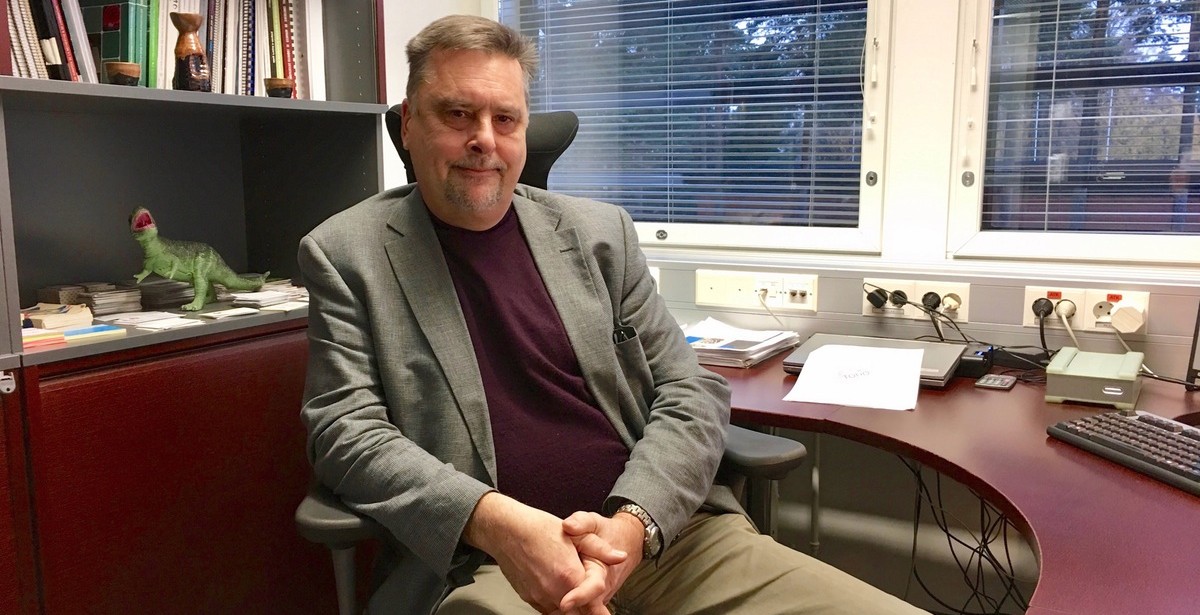Augmented (AR) and virtual reality (VR) are hot topics right now. I had a chance to meet with Professor Charles Woodward, principal scientist at VTT Technical Research Centre of Finland. He is a pioneer and globally renowned authority on AR.
Can you say a few words about your background and what you’re doing at VTT right now?
I graduated as a mathematician from the university and went to Helsinki University of Technology, now Aalto University, to research 3D CAD. During that time, I launched a project that created a CAD and ray casting system for industrial designers. I summarized my research results in my doctoral dissertation back in 1990. I formed a spin-off company DeskArtes Oy that commercialized the system. I worked there as a CEO and CTO for ten years in international software business, the company still doing well.
In 2001, I decided to make a career move to VTT. My task was to combine the work done by a video coding team with 3D graphics. I launched a research area that is today called Augmented Reality.
We are now a team of 23, here in Espoo and Tampere. My role is to innovate, market, sell, and direct projects. Our focus, for a long time, has been the construction industry, where we’ve been trailblazers. Today, even a bigger application area is in industry and maintenance.
Why do you think AR/VR technologies are hot right now? Do you think this frenzy is justified?
The recent boom started when Facebook acquired Oculus, a virtual glasses firm. Google Glasses, even if it was a failure, boosted the trend. Microsoft’s HoloLens has reached a level that enables industrial applications on a large scale. So, the development of data glasses is one thing.
Another booster has been the futurists and experts who have claim that data glasses are the next ICT revolution in the sequence after the PC, the Internet, and mobile technologies. They see the future as a visual experience where information flows 24/7, uninterrupted.
I firmly believe that AR/VR will make a breakthrough in industrial applications in just a couple of years. We can clearly see how industrial apps are gaining momentum. Manufacturers come to us and ask if we can do something for them.
After data glasses have become light enough, consumers will follow, if, of course, the content is interesting enough and adds new value. I think the real consumer adoption will start from a niche. For example, we might see a compelling Pokémon game mode that requires the glasses.
What do you think are the most commercially viable application areas for VR/AR in the construction industry in the near future?
The first applications are related to architectural visualization. People can already see future designs in their environment using mobile devices. It would be natural to do that with data glasses. With glasses, you don’t have to worry about lighting and reflections on a sunny day.
We have done this in real life already. We’ve used AR in municipal decision-making with building committees in Raasepori and Helsinki. Soon, we’ll see interesting building projects presented in AR to the general public, preferably before decisions are made. The proposed Guggenheim museum project in Helsinki would have been a good example. People could have seen the alternatives in the real environment and been able to give feedback on the site.
With AR, everybody can choose where to look. For example, you can see how a proposed project will look from your living room window.
At VTT, we are already past that stage. We want to bring the applications to the whole life cycle of a building. We are looking for ways to use building information models (BIM) after the construction phase for maintenance, changes, and additions. We’re able to present information from the model on mobile devices as an AR experience.
What do you think about using AR on the construction site?
We were the first in the world to pilot test AR with tablet computers on the construction site with Skanska in 2010. The problem with using AR on the site is that the environments are in constant change and can sometimes be messy. We’re going to continue developing this application area, but due to technical challenges, it is not our top priority right now.
In construction, people are wearing helmets. It’s easy to use attach data glasses to helmets and have them easily available. I have tried on a Daqri helmet that has an AR visor built in.
How could AEC companies start exploring the new virtual technologies?
One of the easiest ways to start is to visualize construction designs. The technology is there, and technically it can be done quite easily. If we have a BIM, we can display it in its real location in under an hour.
HoloLens is another technology that Trimble is using to display virtual scale models in meetings. Actually, we did a similar app over ten years ago.
What are the biggest challenges in using AR?
From our point of view, the biggest challenge is to make AR applications useful in large spaces. It requires us to build a locational infrastructure and make certain preparations for acquiring the AR tracking data. Furthermore, we need to integrate design and management systems and IoT sensors with AR.
Often, we find that BIMs that we use are not created as-built or kept up-to-date. That makes it difficult to use them for AR. On the other hand, that keeps us busy with future research.
Where can our readers find more information on your work?
They can visit our site at http://virtual.vtt.fi/virtual/proj2/multimedia/ or watch videos on YouTube Channel at https://www.youtube.com/channel/UC4Msoi7FsOIWsVCJCOrODRw.
Photo: Aarni Heiskanen
View the original article and our Inspiration here


Leave a Reply